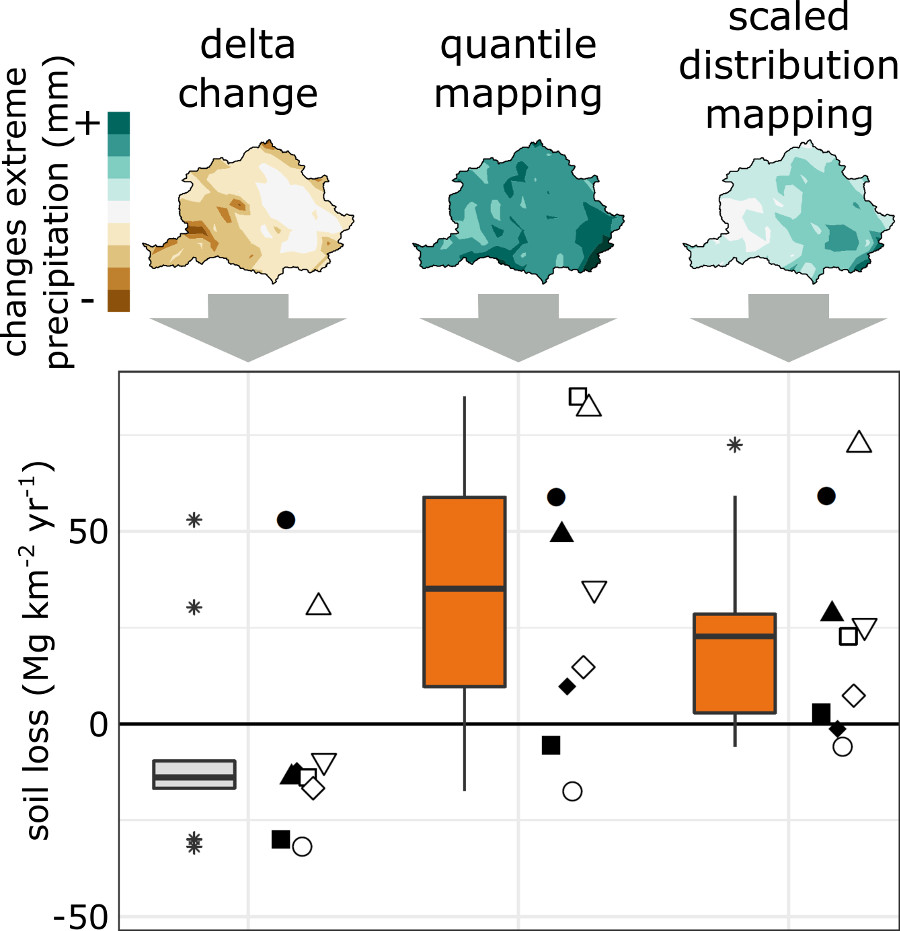
Climate change will most likely cause an increase of extreme precipitation and consequently an increase of soil erosion in many locations worldwide. In most cases, climate model output is used to assess the impact of climate change on soil erosion, however, there is little knowledge of the implications of bias‐correction methods and climate model ensembles on projected soil erosion rates. Using a soil erosion model, we evaluated the implications of three bias‐correction methods (delta change, quantile mapping and scaled distribution mapping) and climate model selection on regional soil erosion projections in two contrasting Mediterranean catchments. Depending on the bias‐correction method, soil erosion is projected to decrease or increase. Scaled distribution mapping best projects the changes in extreme precipitation. While an increase in extreme precipitation not always results in increased soil loss, it is an important soil erosion indicator. We suggest to first establish the deviation of the bias‐corrected climate signal with respect to the raw climate signal, in particular for extreme precipitation. Furthermore, individual climate models may project opposite changes with respect to the ensemble average, hence, climate model ensembles are essential in soil erosion impact assessments to account for climate model uncertainty. We conclude that the impact of climate change on soil erosion can only accurately be assessed with a bias‐correction method that best reproduces the projected climate change signal, in combination with a representative ensemble of climate models.